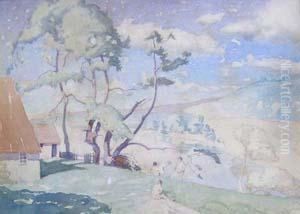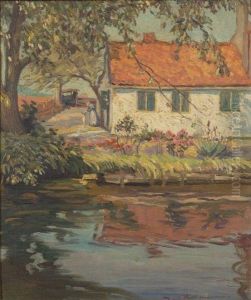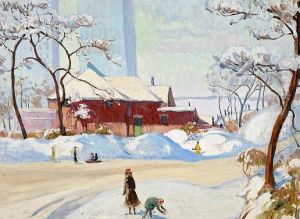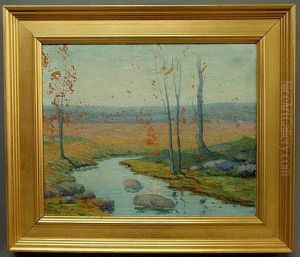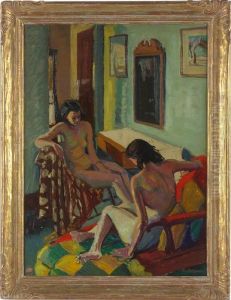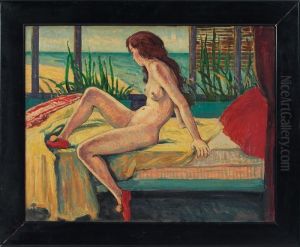Robert Bartholow Harshe Paintings
Robert Bartholow Harshe was an American artist, art administrator, and museum director born on August 28, 1879, in Oskaloosa, Iowa. He pursued his early education in art at the Art Institute of Chicago and later attended the Pennsylvania Academy of Fine Arts. Harshe was also a recipient of the prestigious American Prix de Rome, which allowed him to study at the American Academy in Rome, an opportunity that greatly influenced his artistic development.
Throughout his career, Harshe worked in various capacities within the art world. He was not only a practicing artist but also an influential educator and advocate for American art. His works included painting, etching, and lithography, and he often focused on landscapes and portraits. Despite his personal artistic endeavors, Harshe is perhaps better known for his roles in art administration and education.
In 1913, Harshe became the director of the Museum of Fine Arts at the City Art Museum of St. Louis, where he served until 1921. During his tenure, he was instrumental in expanding the museum's collection and establishing educational programs. He was also involved in organizing the 1915 Panama-Pacific International Exposition in San Francisco, which was a pivotal event for American art, introducing many Americans to modern art.
Following his time in St. Louis, Harshe moved to San Francisco to become the director of the California Palace of the Legion of Honor, a position he held until 1924. His final and most influential role was as the director of the Art Institute of Chicago, a position he assumed in 1921 and held until his death on October 29, 1938. As director, Harshe was responsible for significant growth and modernization of the institute. He oversaw the expansion of its collections, the establishment of the museum's first photography collection, and the enhancement of its educational programs.
Robert Harshe's impact on the American art scene was substantial, particularly in the realms of art education and institutional development. His efforts helped to shape the Art Institute of Chicago into one of the leading art museums in the country. Although not as widely recognized for his artistic output as for his administrative work, Harshe's legacy lives on through the institutions he helped to build and the artists he influenced during his lifetime.
